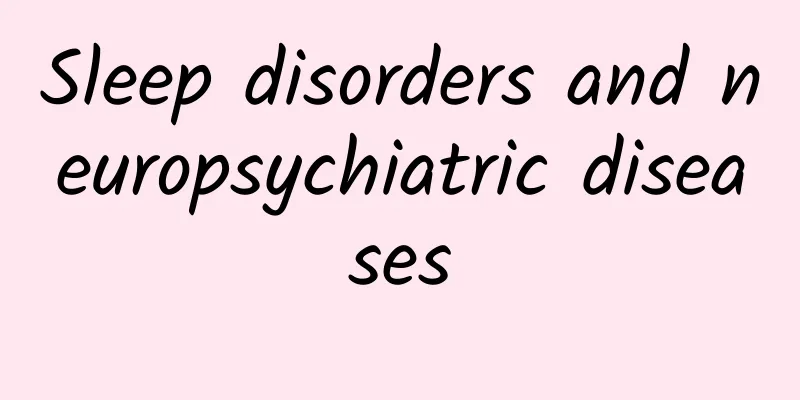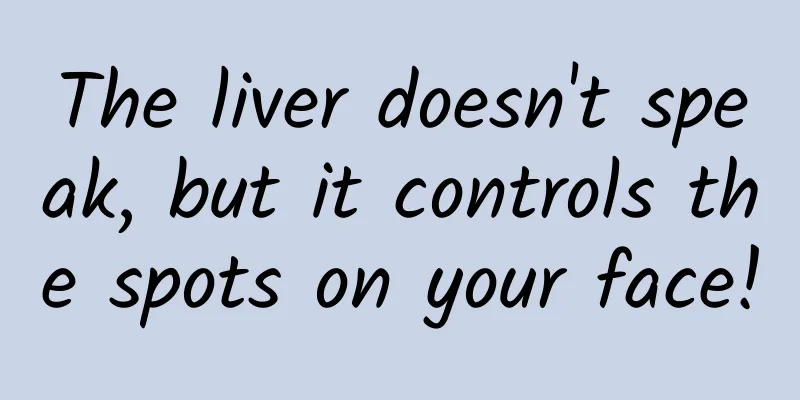Sleep disorders and neuropsychiatric diseases

|
Sleep disorders refer to abnormalities in the quantity, quality, timing or rhythm of sleep. International Classification of Sleep Disorders Insomnia 20% to 30% of people worldwide suffer from insomnia, of which 8% to 10% of acute insomnia gradually becomes chronic, and about 4% of insomnia requires long-term use of sleeping pills. Insomnia includes subjective insomnia and objective insomnia. Subjective insomnia is mainly due to the patient's subjective dissatisfaction with sleep time and quality, but it often differs greatly from the objective sleep indicators obtained by electroencephalogram measurement. Objective sleep time and quality are much better than subjective feelings. Insomnia is a risk factor for mental illness. Compared with healthy people, insomnia patients have a 183% increased risk of depression, a 223% increased risk of anxiety disorders, a 35% increased risk of alcohol abuse, a 55% increased risk of post-traumatic stress disorder, a 67% increased risk of suicide, and a 28% increased risk of mental disorders. Obstructive sleep apnea (OSA) OSA is characterized by intermittent hypoxia, elevated carbon dioxide, and sleep fragmentation associated with repeated upper airway collapse during sleep. The prevalence of OSA in the general population is 9% to 38%. The frequency of sleep apnea (AHI) is considered an important indicator for assessing the severity of OSA. As AHI increases, the risk of death increases significantly. Snoring during sleep accompanied by intermittent snoring and apnea are typical clinical symptoms of OSA patients, often accompanied by decreased sleep quality, daytime sleepiness, and inability to relieve fatigue through sleep. Neuropsychiatric symptoms may occur, such as inattention, memory loss, irritability, anxiety, depression, etc.; multi-system symptoms are prone to occur, such as hypertension, nocturnal angina, metabolic abnormalities, frequent urination at night, sexual dysfunction, hearing loss, facial changes, etc. The prevalence of OSA in patients with schizophrenia is 15.4%, in patients with bipolar disorder is 24.5%, in patients with depression is 36.3%, and in patients with post-traumatic stress disorder is 73.5%. In patients with OSA and comorbid mental illness, continuous positive airway pressure (CPAP) can effectively improve not only sleep breathing time, but also depression, anxiety, and post-traumatic stress disorder symptoms. Rapid eye movement sleep behavior disorder (RBD) RBD is a sleep disorder characterized by dreams and limb movements during REM sleep. RBD is mainly manifested by various complex behavioral abnormalities during sleep, including nightmares or vivid dreams, mostly violent and rough movements, such as excessive clenching of teeth, kicking, and whipping. People often fall out of bed and engage in violent behavior, endangering themselves and others. In long-term follow-up, more than 90% of RBD patients develop neurodegenerative diseases, such as Parkinson's disease (PD), dementia, and multiple system atrophy. Polysomnography (PSG) monitoring can reveal that the most significant electrophysiological feature of RBD is the presence of persistent or even hyperactive skeletal muscle activity during REM sleep. The electromyography of the upper and lower limbs should be monitored simultaneously during the examination. PD and sleep disorders PD is a common neurodegenerative disease in the elderly, with clinical features including motor symptoms and non-motor symptoms such as bradykinesia, tremor, and muscle rigidity. Sleep disorder is the most common non-motor symptom in PD patients, with an overall incidence of 47.66% to 89.10%, and increases year by year with the course of the disease. The manifestations of sleep disorders in PD are varied, the most common ones include insomnia, excessive daytime sleepiness (EDS), RBD, periodic limb movements, restless legs syndrome (RLS), sleep-disordered breathing (SDB), etc. Insomnia Insomnia is a common type of sleep disorder in PD, with an incidence rate of 30.0% to 86.8%. Insomnia refers to a subjective experience in which one is dissatisfied with sleep time and/or quality despite having a suitable sleep opportunity and sleep environment, and which affects daytime social function. The main symptoms include difficulty falling asleep (sleep latency exceeds 30 min), sleep maintenance disorder (awakening ≥ 2 times throughout the night, each awakening time > 5 min; or total awakening time > 30 min), early awakening, decreased sleep quality and reduced total sleep time (usually less than 6.5 h), accompanied by daytime functional impairment. Most PD patients in China suffer from difficulty maintaining sleep and disordered sleep structure. For PD patients with clear causes of insomnia, the causes should be treated first, such as adjusting the dosage and time of related drugs, improving nocturnal motor symptoms, and treating anxiety and depression. Non-drug treatment: including cognitive behavioral therapy for insomnia, moderate to high intensity physical exercise, bright light therapy, and repeated transcranial magnetic stimulation. Drug treatment: For patients with poor control of nocturnal PD motor symptoms, rotigotine patches, pramipexole extended-release tablets, ropinirole extended-release tablets; compound levodopa extended-release, rasagiline, and entacapone double-dopa tablets can be used. Melatonin, eszopiclone, and agomelatine can be used for patients with primary insomnia. EDS The incidence of PD with EDS is 21%~76%, and the Chinese report is 13.2%~46.9%. EDS may appear before PD motor symptoms and increase with the progression of the disease. In the 5-year follow-up of early PD patients, the incidence of EDS can increase from 11.8% to 23.4%. Non-drug intervention: including cognitive behavioral therapy, bright light therapy, and repeated transcranial magnetic stimulation. Drug treatment: modafinil, methylphenidate, istradefylline, sodium oxybate, and atomoxetine can be used. RBD 22.2%~60% of PD patients have RBD, and their clinical symptoms are relatively more severe than those of PD patients without RBD. 33%~65% of RBD patients have sleep-related harmful behaviors. PSG monitoring is a necessary means of diagnosing RBD. When conditions permit, PSG examination should be performed to confirm the diagnosis of RBD; optimize the RBD treatment plan, reduce or stop using drugs that may aggravate RBD. Non-drug intervention: provide a safe sleeping environment. Drug treatment: melatonin, clonazepam; dopamine receptor agonists; melatonin receptor agonists such as ramelteon and agomelatine can be used. RLS The risk of RLS in PD patients is three times that of the general population, with an average incidence of 12%. In particular, the prevalence of PD patients who have received treatment is higher than that of those who have not been treated at the first diagnosis. In my country, the overall incidence of PD combined with RLS is about 33%. Risk factors for RLS in PD patients include insomnia, depression, cognitive impairment, course of disease, use of dopaminergic drugs, age of PD onset, age of RLS onset, and severity of PD disease. For PD patients with RLS, relevant examinations should be completed to exclude secondary factors, including related drugs (such as antidepressants, antiepileptic drugs, etc.) and related diseases (such as iron deficiency anemia, diabetic peripheral neuropathy, renal insufficiency, etc.). Rotigotine is used to improve PD motor symptoms and RLS symptoms; other dopamine receptor agonists such as pramipexole, ropinirole, and piribedil need to accumulate evidence in PD patients with RLS due to the lack of large-sample clinical studies. Opioids are used as a treatment for RLS that is ineffective or refractory to other treatment options. SDB SDB is a group of diseases with abnormal breathing during sleep, with or without abnormal respiratory function during wakefulness. It includes a series of clinical syndromes such as OSA and central sleep apnea, Cheyne-Stokes breathing, sleep hypopnea syndrome, and arousal disorders related to respiratory effort such as upper airway resistance syndrome. Non-drug treatment: including changing lifestyle habits, losing weight, controlling weight and diet, exercising appropriately, stopping or reducing drinking and smoking, using sedatives and other drugs that may cause or aggravate OSA (such as clonazepam) with caution, sleeping on the side, raising the head of the bed, and avoiding excessive daytime fatigue. CPAP is the most effective method for treating PD combined with OSA, and it helps to improve OSA-related EDS. Other non-drug treatments include servo-ventilation and oxygen therapy. Uvulopalatopharyngoplasty and mandibular advancement appliances are expected to become one of the treatment methods. Drug treatment: There are few related studies, and the effect of drugs on OSA is not clear. Levodopa may be helpful for upper airway obstruction. Research results show that taking Sinime before bedtime can reduce nocturnal OSA symptoms in PD patients. More prospective studies are needed to confirm the role of dopaminergic drugs in the treatment of OSA. An article published in 2013 proposed that in order to study the nature of sleep, it is urgent to launch a multidisciplinary "Human Sleep Plan" to improve people's health and quality of life in the most effective way. Academician Lu Lin also pointed out in an academic report that the pathogenesis and intervention technology research of sleep disorders is an integral part of the Chinese Brain Science Plan. The establishment of sleep-related databases and research platforms, sleep medicine and multidisciplinary cross-cutting are all important future development directions for sleep medicine. References: 1. Academic report by Professor Tang Xiangdong from West China Hospital of Sichuan University, "Sleep disorders and major neuropsychiatric diseases" 2. Anesthesia and Pain Committee of the Chinese Sleep Research Society. Expert consensus on preoperative screening and evaluation of adult patients with obstructive sleep apnea[J]. Chinese Journal of Anesthesiology, 2021, 41(12): 1414-1420. 3. PD and Movement Disorders Group of the Neurology Branch of the Chinese Medical Association, PD and Movement Disorders Group of the Neurology Branch of the Chinese Medical Doctor Association. Expert consensus on the management of sleep disorders in PD in China[J]. Chinese Journal of Neurology, 2022, 55(05): 441-451. |
<<: Don't bow your head, neck wrinkles will appear
>>: After having a pacemaker installed, does it mean I can only lie down?
Recommend
How many days of bleeding after painless abortion
Today's society is becoming more and more ope...
What should women who stay up late eat?
Nowadays, women no longer stay at home all day li...
Can hyperthyroidism cause miscarriage?
Girls must pay attention to changes in their vita...
How to prevent visceral prolapse after childbirth
We all know that it is not easy for our female fr...
Love your teeth, and love your teeth to prevent caries
This is the 3455th article of Da Yi Xiao Hu A per...
How to choose glutinous rice? How to make steamed glutinous rice balls
Glutinous rice can be used to make many kinds of ...
Can women take Fuyankang tablets during menstruation?
Menstruation is a special stage in a woman's ...
Skin care tips for 40-year-old women
We often hear in our daily life that a woman is i...
Causes of chest pain in pregnant women
After pregnancy, when the body's immunity is ...
What causes uterine swelling and pain?
Nowadays, the incidence of gynecological diseases...
How to treat pelvic inflammatory disease with a mass?
Pelvic inflammatory disease is a gynecological di...
What are the symptoms of pelvic tuberculosis?
Tuberculosis is becoming more and more common. Do...
Why does the waist swell in early pregnancy?
Most female friends are very happy and joyful aft...
What is the reason for women's sudden frequent urination?
Because modern people are busy with their lives a...
Do you know the harm of smoking to women?
In today's life, many people like to smoke ve...









